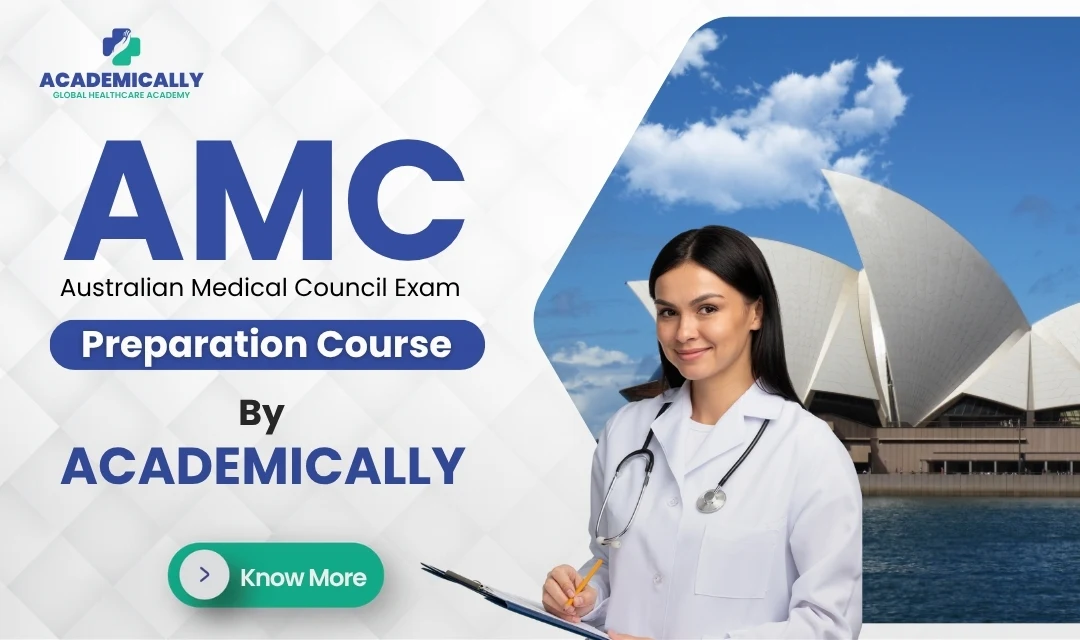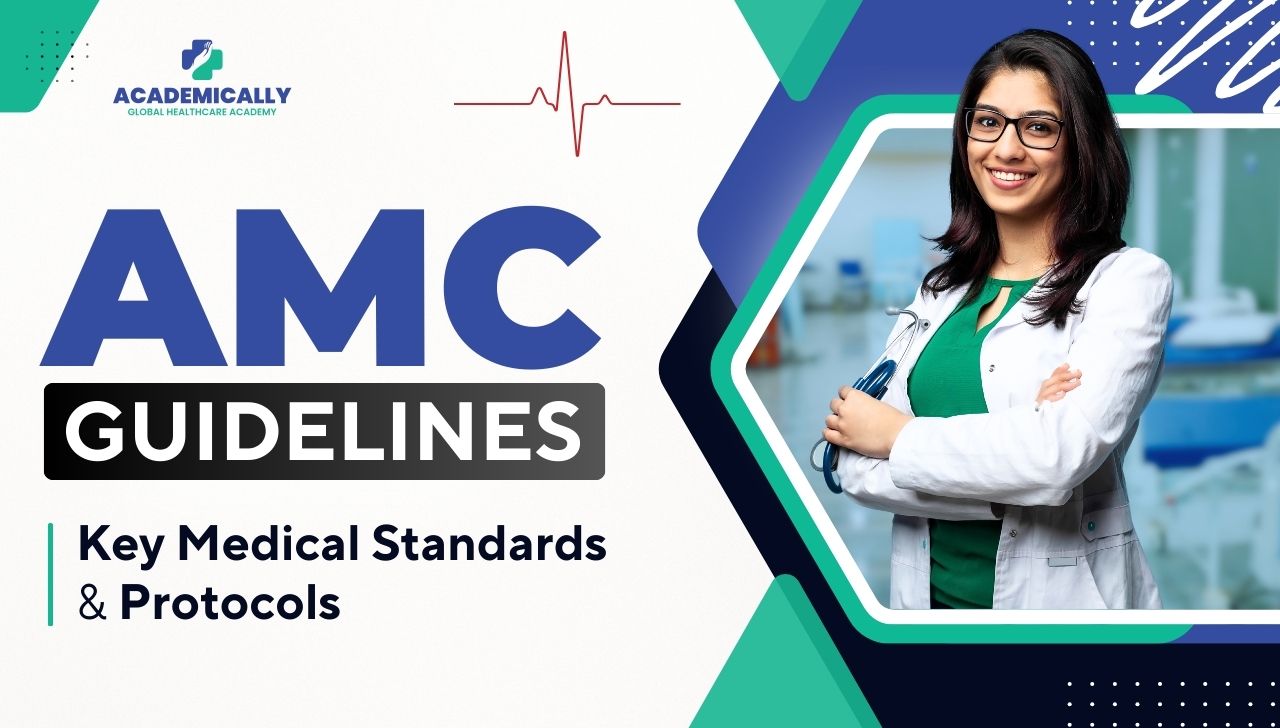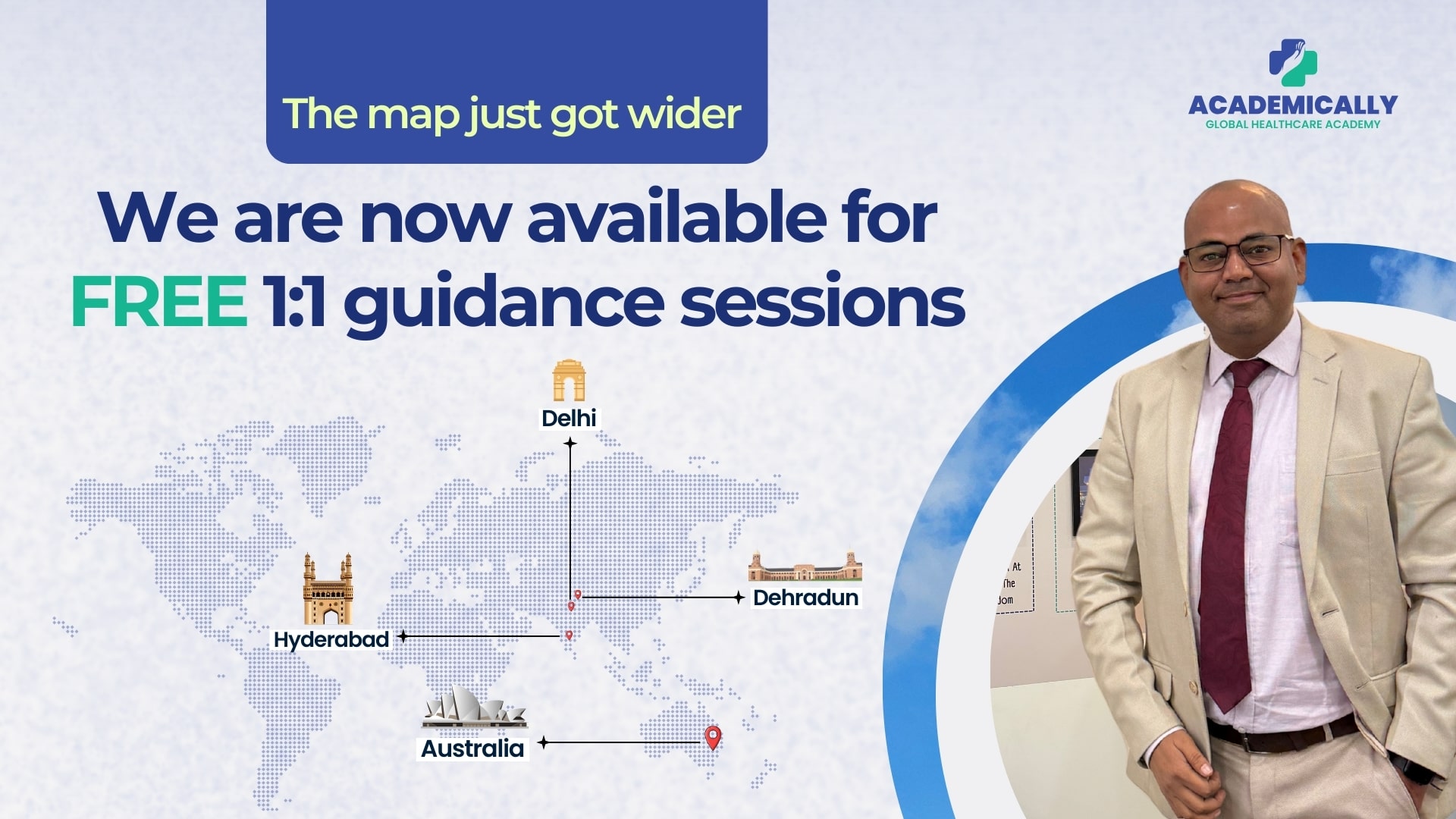You probably might know how much doctors earn in Australia, right? It’s almost AUD 150,000!! That's like almost a crore in Indian rupees.
But if you want to practice medicine in Australia, the Australian Medical Council (AMC) sets the standards. It checks how doctors are trained, assessed, and expected to practice. These standards guide not only medical schools but also International Medical Graduates (IMGs) entering the Australian healthcare system.
The AMC ensures that doctors are:
- Safe and competent
- Professional and ethical
- Culturally aware
- Prepared for real-world healthcare challenges
Understanding these standards is also essential if you are preparing for AMC exams, because these exams test whether you meet these professional expectations.
In this blog, we’ll break down the six AMC standards in simple terms and explain how they connect to the AMC exams.
1. Purpose, Context & Accountability
What it means:
Every medical school or program must have a clear purpose: teaching, research, and community service. Programs must train doctors to practice safely as interns in Australia or New Zealand. This should be done while taking care of the health needs of local communities, including those of Aboriginal, Torres Strait Islander, and Māori populations.
Why it matters:
Doctors are part of a broader healthcare system. Therefore, training must prepare them to meet the real-world needs of patients and communities.
Example:
Universities like Western Sydney University and Charles Sturt University involve community members in co-designing programs. Students participate in community placements that focus on underserved populations, learning how to apply medical knowledge safely and responsibly.
2. Curriculum
What it means:
The curriculum is the plan for what students learn, including:
- Medical science
- Clinical skills
- Professionalism and ethics
- Communication and teamwork
Why it matters:
A structured curriculum makes sure that doctors are well-rounded and ready for clinical practice. It also prepares students to meet the AMC Graduate Outcomes, which are the knowledge and skills measured in exams.
Example:
Students rotate through hospitals, general practices, and community clinics. They learn not only how to treat patients but also how to communicate, work in teams, and understand cultural differences.
3. Assessment
What it means:
Medical schools must have fair, reliable ways to check students’ competence, including:
- Written tests (MCQs)
- Practical exams (OSCEs)
- Workplace-based assessments
- Continuous feedback for improvement
Why it matters:
Assessment ensures graduates are safe and competent doctors before they begin practice.
Example:
Students are evaluated on their ability to take patient histories, perform examinations, and make clinical decisions. Supervisors provide feedback to improve skills before graduation.
To pass the exam on the first attempt, enrol in Academically’s AMC Preparation Course. You will receive live and recorded lectures, study materials, practice questions, AI-based mock tests, personalised guidance from AMC experts, and much more.
4. Students
What it means:
Medical schools must support students through:
- Transparent admissions and diversity policies
- Academic and personal support systems
- Mentoring and career guidance
Why it matters:
Supported students are better learners and develop into competent, ethical doctors.
Example:
Programs offer mentoring, counselling, and leadership opportunities to help students succeed while respecting their cultural and personal needs.
5. Learning Environment
What it means:
Hospitals, clinics, and classrooms must be safe, professional, and supportive for learning.
Why it matters:
A positive learning environment builds confidence, practical skills, and professional behaviour.
Example:
During clinical rotations, students receive structured supervision, clear instructions, and constructive feedback, ensuring they can practice safely and effectively.
6. Evaluation & Continuous Improvement
What it means:
Medical schools must regularly review and improve their programs. Feedback from students, staff, and community members ensures the program remains relevant.
Why it matters:
Healthcare changes quickly. Continuous improvement ensures doctors are trained with up-to-date knowledge and skills.
Example:
Curriculum committees update teaching methods, introduce simulation labs, or refine assessment tools in response to stakeholder feedback.

Benefits of Understanding AMC Guidelines
| Benefit | Why It Matters |
| Patient Safety | You learn to make safe, ethical clinical decisions. |
| Exam Readiness | AMC exams reflect the standards, so preparation aligns naturally. |
| Career Preparedness | You understand Australian healthcare expectations. |
| Cultural Competence | You can provide inclusive care for diverse populations. |
| Professional Growth | Graduates are equipped for internships and specialty training. |
Tips for IMGs Preparing for AMC Exams
- Study the AMC Graduate Outcomes — these map directly to the six standards.
- Practice OSCE scenarios to simulate real clinical situations.
- Learn about Australian healthcare and cultural safety to succeed in the Clinical Exam.
- Use structured AMC preparation courses like Academically’s AMC Preparation Course to practice both MCQs and Clinical skills.
By following the guidelines while studying, IMGs can prepare for exams and real-world practice simultaneously.
Final Words
AMC Guidelines are more than rules. They are a roadmap for safe, ethical, and competent medical practice in Australia. Understanding the six standards: Purpose & Accountability, Curriculum, Assessment, Students, Learning Environment, and Continuous Improvement, makes you prepared not just for AMC exams, but for a successful medical career in Australia.
If you’re an IMG, aligning your learning or teaching with AMC standards means you are ready to deliver high-quality care and grow in the Australian healthcare system.
For more information or questions, you can reach out to experts at Academically. They will assist you from start to finish.




